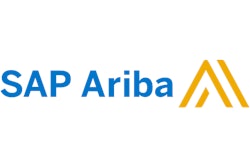It is no longer controversial to assert that Software-as-a-Service (SaaS) has arrived as an acceptable, if not preferable, model for software delivery. Evidence: IDC reports that 79 percent of enterprises are currently purchasing or evaluating SaaS solutions. And Gartner Group projects that a third of all software revenues will be derived from SaaS offerings.
It's easy to see what's driving the interest. SaaS solutions deliver software functionality, content and services over the Internet from a single application instance that is shared among all customers. That means there is no need to install or maintain costly software or hardware. Pricing is based on a "pay-as-you-go" subscription, and system performance and service levels are managed by the solution provider.
Numerous independent research studies have quantified the measurable advantages this model provides in the form of faster implementation, greater system adoption, more rapid innovation and lower total cost of ownership (TCO).
What's the Catch?
One hurdle facing SaaS is overcoming misconceptions about the model and application integration. Traditional installed software vendors and IT departments attempt to position integration as the Achilles' heel of the SaaS model, arguing that SaaS solutions only focus on narrow processes, are built for small- to mid-size businesses (SMBs) and lack integration capabilities.
Anyone delving into these issues quickly ascertains that such claims are pure myth. SaaS providers now offer integration solution suites supporting complete end-to-end processes, such as source-to-pay, order-to-cash and even complete back-office operations, such as financials and human resources. And, while SaaS delivery and pricing models extend to SMBs, large enterprises are currently the biggest users of SaaS solutions.
Leading SaaS providers have also developed innovative new enterprise application integration approaches that marry proven business-to-business integration (B2Bi) methods with the delivery and cost benefits of Software-as-a-Service to permit a flexible array of data integration options — from periodic batch to real-time messaging — between SaaS solutions and installed enterprise applications.
This new Integration-as-a-Service (IaaS) model treats integration as a fully hosted service, eliminating many of the burdens and costs of implementing and maintaining enterprise application integration using traditional software and methods. IaaS delivers a multitude of pre-defined adapters between your SaaS solution and leading enterprise applications. IaaS ascribes to a flexible, subscription-based pricing model that scales based on the level of integration required.
The Integration Fallacy
Vendors and enterprises criticizing SaaS' integration capabilities are often really criticizing any best-of-breed application. What they are saying is that they believe the best way to tackle the integration challenge is to standardize on a single ERP system for all business application requirements.
This consolidation approach may simplify software vendor management for the IT department, but it often fails to deliver the application functionality that business line executives require to meet their cost, profit and performance goals. And there is ample evidence that it doesn't solve the integration conundrum. Even top-performing IT organizations still grapple with a heterogeneous systems environment that requires data and business-process integration between disparate commercial and homegrown systems. In fact, industry studies report that integration costs account for more than a quarter of total enterprise IT budgets.
Traditional enterprise application integration approaches typically come in two flavors:
- Point-to-point, which "hardwires" integration between applications.
- Middleware, which provides a centralized messaging bus for routing data between multiple applications.
Both approaches require significant upfront and ongoing expenses, installed software and hardware, consulting or IT services, and custom coding. In fact, Yankee Group research of 800 data application integration implementations found that initial integration software licensing costs represent only 12 percent of the three-year TCO of the typical integration project. The primary costs of these projects are internal and external labor requirements to install and maintain the integration software.
The IaaS Answer
IaaS overcomes these challenges by utilizing B2Bi integration technology as the bridge between the SaaS solution and in-house business applications. B2Bi systems are capable of driving this new on-demand integration model because they are traditionally employed to automate business processes between manufacturers and their external trading partners. That means they provide application-to-application connectivity along with functionality that is crucial to linking internal and external software: i.e. secure data exchange across the corporate firewall.
Unlike pure enterprise application integration solutions designed only for internal data sharing, B2Bi platforms have the ability to encrypt files for safe passage across the public network, manage large data volumes, transfer batch files, convert disparate file formats and guarantee data delivery. Just as these abilities ensure smooth communication between manufacturers and their external suppliers or customers, they also enable reliable interchange between hosted and installed applications.
The IaaS model also leverages the adapter libraries developed by B2Bi vendors to provide rapid integration with various business systems. Because the B2Bi partner can supply pre-built connectors for major ERP, CRM, SCM and other packaged business applications as well as legacy systems from AS400 to MVS and mainframe, the SaaS provider can meet the integration needs of most customers quickly and reliably without custom programming.
The use of a hub-and-spoke architecture further simplifies implementation and avoids placing an excessive processing burden on the customer side. The hub is installed at the SaaS provider's data center to do the heavy lifting such as reformatting files. A spoke unit, typically consisting of a small downloadable Java client, is then deployed at each user site to handle basic tasks such as data transfer. This also eliminates the need for an expensive server-based solution, data mapping and other tasks at the customer location.
With these pieces in place, SaaS providers can offer integration services under the same subscription-based pricing model as their core offerings. Different plans can be set up to accommodate the needs of different customers. Businesses with relatively sophisticated IT infrastructures that simply need file transfer services can pay a lower rate than those that require full back-end integration between the SaaS solution and their internal databases and/or enterprise systems.
Broad User Benefits
For the growing number of businesses that are turning to SaaS solutions for their software needs, this Integration-as-a-Service model provides benefits ranging from the information visibility achieved through the application integration itself to rapid deployment, minimal impact on IT resources and low total cost of ownership.
The ability to hand integration responsibilities and most of the integration infrastructure over to the SaaS provider relieves IT departments of costly in-house integration projects, software upgrades and the need for on-board integration specialists. It also reduces the burden of installing and managing integration-related servers, databases and storage area networks in the user's data center, keeping equipment and overhead to a minimum.
The use of pre-built connectors accelerates the integration process and lowers implementation risk. The security provided by the B2Bi communications backbone aids compliance with regulatory requirements such as Sarbanes-Oxley. And once the integration infrastructure is set up for one SaaS solution, it can be easily extended to connect to other on-demand systems or even to external trading partners.
Finally, from a cost perspective, businesses benefit from the bundling of integration expenses into the SaaS fee structure. This strategy eliminates tens of thousands of dollars in upfront integration expenses, allows those costs to be amortized over many months, and makes it easier to justify the project to management.
The upshot is an integration formula that sweeps away what has arguably been the last defensible objection to the hosted software delivery model. Integration is no longer the Achilles' heel of the SaaS world; with the Integration as a Service approach, it is instead a selling point. Indeed, IaaS shares most of the advantages that have fueled the growth of SaaS itself, including the small in-house footprint and pay-as-you-go pricing structure.
This bodes well for the future of both SaaS and IaaS. Whether you need to connect your hosted software to SAP, Oracle, PeopleSoft, JD Edwards, Ariba, SSA Global/Baan or almost any other well-known back-office application, IaaS can get you there quickly and cost-effectively. Add another acronym to your lexicon. This one promises to be a keeper.
About the Authors: Tim Minahan recently became senior vice president of Marketing at Procuri Inc., (www.procuri.com) a provider of on-demand supply management solutions. Prior to joining Procuri, Minahan spent 15-years researching and consulting on supply management strategy and technology, including an eight-year stint at Aberdeen Group where he developed and managed the Global Supply Management Research Practice. Steve Sprague is executive vice president, of Marketing & Product Strategy for SEEBURGER Inc., (www.seeburger.com) a global provider of business integration solutions. Since joining the company in 2001, Sprague has also been responsible for the joint product and field initiatives with ERP vendors such as SAP, PeopleSoft, and SSA Global. He is integrally involved in vertical solutions, emerging integration trends, and the refinement of operational business processes.



















